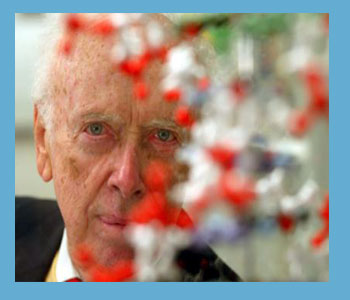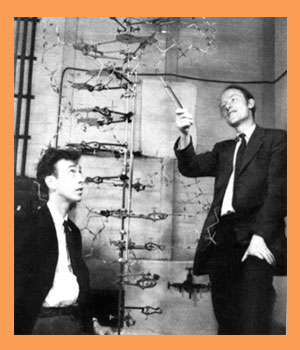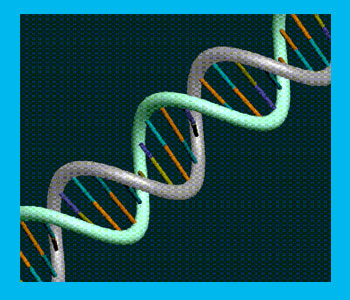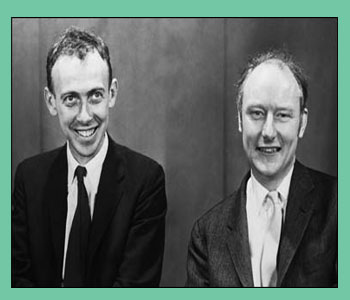

The 1950s was a decade of several historical and momentous events; from the Cold War to the Korean War; from The Second Red Scare to McCarthyism. It is a period of many firsts; from the first credit card, to the first color television, first atomic submarine and television remote. Moreover, the 1950s is an era of various technological and scientific innovations and discoveries; the first organ transplant was performed, polio vaccine was created, and NASA was founded. In addition, it is when the first DNA structure was introduced by a group of scientists. One of those genius and brilliant minds was James Watson.
James Watson was an American molecular biologist well known as one of the pioneer of one of the greatest discovery known to world. Together with Francis Crick and Maurice Wilkins, he worked to introduce the molecular structure of nucleic acids and its significance for information transfer in living material. The team won the 1962 Nobel Prize in Physiology and Medicine for their discoveries about the structure of deoxyribonucleic acid (DNA), the molecule that contains the hereditary information for cells. Watson was also instrumental in establishing the Human Genome Project, the international scientific collaboration that identified the complete genetic blueprint of humans in 2003.


James Watson was born in Chicago, Illinois on April 6 1928. He was the son of a businessman, also named James Dewey Watson, and Margaret Jean Mitchell. At 12, Watson enrolled in University of Chicago and studied natural sciences and earned his degree in zoology.Watson shared his interests with his father and grew fond of watching birds. And after graduating in 1947, he went to Indiana University to take post-graduate studies. He initinally intended to pursue a degree in ornithology. However, after reading Austrian physicist and Nobel laureate Erwin Schrödinger’ What is Life? (1944), a prominent book about genes and heredity, Watson increasingly developed his passion in the field of genetics. At Indiana he pursued his graduate studies in genetics and had worked with two Nobel laureates. He studied under American geneticist Hermann Muller and Italian-born American physician-biologist Salvador Luria. Luria was one of the initiator of the Phage Group, an informal group of scientists and researchers from different universities who worked together in making use of the viruses that infect bacteria called bacteriophages
Watson studied the effect of X rays on bacteriophage replication for his doctoral thesis, which he received in 1950. He then traveled to Europe for his postdoctoral studies. From September 1950 to September 1951, he worked on and studied DNA in bacteriophages in Copenhagen, Denmark, while on a fellowship from the National Research Council.
In May 1951 Watson attended a symposium where he met Maurice Wilkins from King’s College, London. Wilkins showed Watson an X-ray diffraction image of DNA. The X-ray diffraction provides X-ray patterns of a molecule’s chemical structure. Wilkins’s project motivated and greatly influenced Watson to change the direction of his research and focus toward the structural chemistry of Deoxyribonucleic Acid. Watson proposed that it would be possible to determine the structure of DNA from the analysis of X-ray diffraction patterns. He believed that knowing the structure of DNA would be the key to understanding genes.


In chasing his research interests, Watson moved to the Cavendish Laboratory at the University of Cambridge in 1951 wherein he met Francis Crick. They were both devotedly interested in studying the structure of DNA. From 1951 to 1953, Watson and Crick worked together on their DNA studies as they continue their independent researches.
Crick and Watson asked Wilkins and British physical chemist Rosalind Franklin from King’s College, London, to perform X-ray diffraction analysis of the DNA molecule to facilitate them in their research. After many trials, Watson and Crick used Franklin’s X-ray diffraction patterns to acquire a model for the three-dimensional structure of DNA. The model described DNA as two complementary strands twisted into a double helix and became known as the Watson - Crick Model. It was a vital significance in biology. The model empowered scientists to understand and describe living things for the first time in terms of the structure and interaction of molecules. The famous photograph of them next to their double helix model has become an icon of molecular biology. Their discovery of the structure of DNA opened the door to rapid advances in molecular biology over the next 50 years
Watson and Crick submitted their discovery in the British science journal Nature and their double helix model was consequently published on April 25, 1953. In 1962, Watson, Crick, and Wilkins became recipients of the presitigous Nobel Prize in Physiology or Medicine for their research on the structure of nucleic acids.
In 1953, Watson returned to the United States and spent the summer at Cold Spring Harbor Laboratory of Quantitative Biology in New York. There he used X-ray diffraction to examine the structure of Ribonucleic Acid (RNA), a molecule essential in the production of proteins. He spent 1955 researching virus structures with Crick at Cambridge University before accepting a position in the biology department at Harvard University. Watson taught molecular biology and continued his research in the role of RNA in protein synthesis in Harvard. In 1968, Watson served as the director of the Cold Spring Harbor Laboratory, while still at Harvard. In 1976 he then left Harvard to become a full-time director of Cold Spring Harbor Laboratory. Under his direction, the laboratory became a leader in the field of oncogenes or cancer genes and the molecular basis of cancer.


Watson wrote the influential textbook, The Molecular Biology of the Gene (1965), which set new standards in its field. Later on, he provided his own account of the discovery of the structure of DNA in The Double Helix (1968). A new variation in scientific autobiography and became an international bestseller. This peculiar account of scientific research and blunt discussion of colleagues both stunned and pleased readers.
In addition to the Nobel Prize, Watson has achieved several other honors, including the Lasker Prize in 1960, the John J. Carty Gold Medal of the National Academy of Sciences in 1971, the Presidential Medal of Freedom in 1977, and the National Medal of Science, awarded by President Bill Clinton in 1997.
Sources:
Encarta Online Encyclopedia
Wikipedia Online Encyclopedia